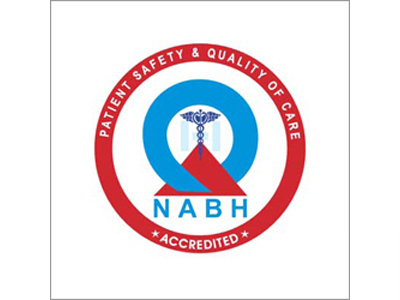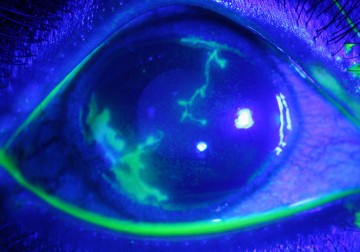A new study from LVPEI by Drs. Bhupesh Bagga, Anthony Vipin Das, and others reports on the most common types of herpes simplex keratitis found among Indians and their demographics, based on 8 years of electronic medical record data of patients at LVPEI.
Over four billion people in the world are estimated to be infected with herpes. The infection is caused by the herpes simplex virus (HSV) and is asymptomatic in most cases. However, some patients can develop painful blisters on the mucous membranes of the body, like the mouth or the lips. HSV can also infect the conjunctiva of the eye, leading to corneal inflammation, corneal scarring, lesions in the eyelids, and loss of vision. This condition is called herpes simplex keratitis (HSK) and is a common cause of corneal blindness in high-income countries. HSK’s impact in such nations has been well studied, with the annual incidence of HSK in the USA, for example, being 11.8 per 100,000 population. While current estimates report a global incidence of around 24 per 100,000 person-years, the data is derived from studies primarily based on American and European populations.
In contrast, little is known about the prevalence or presentation of HSK in low- and middle-income countries. Our understanding of the condition comes from small, clinic-based studies with a few hundred cases. In 1997, for example, a clinic in South India found a prevalence of 7.8% (234 patients) from a sample of 3000 corneal patients over a period of two years. This lack of information puts infected patients in these countries at a great disadvantage. HSK can be present in the corneal epithelia or as a stromal disease, a variation that is hard to pin down. So, any insight into the clinical and demographic features of HSV keratitis is of great value for treatment outcomes in such countries.
In a new study published in the journal International Ophthalmology, Drs. Bhupesh Bagga, Anthony Vipin Das, and others from LVPEI address this lacuna by presenting the demographics and clinical profiles of the largest cohort of Indian patients with HSK keratitis. The team screened LVPEI’s electronic medical records for all patients diagnosed with HSK at LVPEI over an 8-year period and selected 8308 patients (8897 eyes) for the study. Nearly two-thirds (65%) of HSK patients were men, and over half of the patients were between the ages of 21 and 50 (median age: 40 years). Moreover, most patients (93%) had an infection in one eye. More than half of the patients were from rural areas (52%), compared to urban (40%) and metropolitan regions (8%). However, the distribution was roughly equal among various professions like agricultural workers (22%), students (17%) or manual laborers (11.5%).
This study found that immune stromal keratitis, or inflammation of the corneal stroma, was the most common HSK in the cohort (61%), followed by epithelial keratitis (17%), and endotheliitis (13%). This distribution across the conjunctiva is best explained by the fact that the data is from a tertiary level facility—some of the conditions may have been addressed at a lower-level facility. The study also looks at 15 consecutive follow-ups for the cohort and notes a decrease in most symptoms, despite drop-outs, at follow-up visit 6, after which they plateau.
‘The study presents clinical data and patient demographics from one of the largest cohorts of patients with herpes simplex keratitis,’ says Dr. Bhupesh Bagga, Head of the Ramoji Foundation Centre of Ocular Infection and the corresponding author for this paper. ‘Despite the limitation of being hospital-based dataset, the size and range of treatment outcomes it presents make this a useful and important milestone in our understanding of herpes and the eye.’
Citation
Das AV, Satyashree G, Joseph J, Bagga B. Herpes simplex virus keratitis: electronic medical records driven big data analytics report from a tertiary eye institute of South India. Int Ophthalmol. 2023 Sep 5
Photo credit: Herpes Simplex Virus; by ‘Nephron’; CC BY 3.0.



